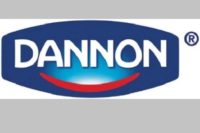Slash sugar in yogurt
Ingredient suppliers have a number of tools to help with sugar-reduction goals.

Credit: da-kuk via E+ Collection on www.gettyimages.com

There were over 2,000 new cultured products introduced worldwide in the past two years with a reduced-, low- or no-added-sugar claim, according to Innova Market Insights’ new product database.
Yogurt is the primary cultured dairy product that we think of when it comes to sugar content. We have come a long way since the days when drinkable yogurts in the United States had the same levels of sugar as a regular soda — about 20 years ago. Because people associate yogurt with healthy products, it just made sense to develop products with lower levels of sugar.
Today, consumers are even more focused on consuming less sugar, and they definitely don’t want it from their yogurt. Thankfully, ingredient suppliers have an ever-growing list of tools to help dairy processors achieve sugar-reduction goals while also making a product that consumers will like.
Hydrolyze it
One of the quickest ways to increase sweetness in a yogurt is to hydrolyze the remaining lactose using lactase. Many companies sell lactase, and it is added right along with the yogurt cultures prior to fermentation.
You can dial in the level to use so that by the end of the fermentation, all of the lactose has been hydrolyzed into glucose and galactose. One side benefit is that you now also have a “lactose free” product. Another side benefit: Some companies have a lactase enzyme that will also produce galacto-oligosaccharides (GOS), under the right conditions, as a product of hydrolysis. GOS acts a prebiotic and is beneficial for our microbiome.
Because the sweetness produced by hydrolysis alone would not be enough in a typical yogurt, you typically see sweeteners used in combination with lactase addition.
Add sweetness
Sweeteners are classified as nutritive (caloric) or non-nutritive. The nutritive types have calories and include ingredients such as sucrose, fructose, high fructose corn syrup, honey, maple syrup, brown sugar, fruit juices, grain syrups, and sugar alcohols.
With the exception of sugar alcohols, the nutritive types all contribute to added sugar and overall carbohydrate content. Sugar alcohols don’t contribute to added sugar, but they do contribute to the carbohydrate content.
All of these sweeteners have different potency, with fructose being the highest of the group at 1.3 (compared to 1 for a 5% sucrose solution), so sometimes the addition can be minimized with a higher potency caloric sweetener. Keep in mind that caloric sweeteners also contribute to the body, texture, and flavor of the yogurt, so the selection is important.
Since the goal is reducing sugar, better success will be achieved by combining nutritive and non-nutritive sweeteners. Non-nutritive or low/no-calorie sweeteners are also called high-potency sweeteners. These include aspartame, acesulfame K, saccharin, stevia, monk fruit extract, sucralose, neotame and advantame, with a range of 180-20,000 times the potency of sugar. Some of these are considered more clean label, but they all work best in combination to achieve a good sweetness profile.
One of the newer sweeteners that has the texture and taste of sucrose but does not contribute to “added sugar” is allulose. Allulose has a potency of 0.7 and has 0.4 calories/gram. A new no-sugar yogurt on the market uses a combination of allulose, stevia, and monk fruit as its sweetener system. Reducing sugar isn’t easy, but today’s sweeteners are up to the challenge.
Kimberlee (K.J.) Burrington is director of training, education, and technical development for the American Dairy Products Institute.
Looking for a reprint of this article?
From high-res PDFs to custom plaques, order your copy today!







